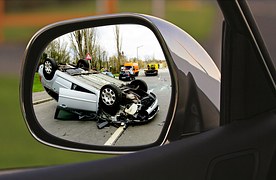The Top Five Things To Look For In A Car Accident Claim.
Whether you are dealing with a motor vehicle accident, a slip or trip and fall claim, or some other negligence-based case, in any personal injury claim, obviously, there’s going to be an accident, or an injury, or both. The injured person will receive medical treatment for those injuries, if warranted. As Attorney Eric T. Kirk will tell you.

Common injuries that result from motor vehicle accidents, for example, are things like cervical and lumbar strains and sprains. The recovery time for these types injury can last for days to months. Many people benefit from physical therapy to aid in the recuperative process. At some point and therapist and the doctor overseeing the treatment will conclude that their efforts have been effective, but have been exhausted. Commonly this juncture is called “maximum medical improvement.” Typically, when this point is reached, the doctor will release the injured person from his or her care to come back on an as-needed basis.
It is during this treatment phase that the effective personal injury attorney will be collecting vital information regarding the case. Police reports, pictures, scene surveillance if any, witness interviews, and the collection of medical records are all things that need to be gathered and analyzed. Also, during the beginning of this phase, the thorough personal injury lawyer will have set up claims with the other driver and with your own personal injury protection insurance carriers.
When the medical treatment phase has concluded, and the necessary information has been gathered, your claim progresses to what is known as the demand stage. Here, an aggressive personal injury lawyer will collect all of the documentation, assemble it into a package, setting forth and outlining the theory of liability, and all the materials that support a claim for money damage, and submit it to the insurance company for the at-fault party. The claim can progress a couple of different ways from this point.

The insurance company for other party may deny the case and its entirety, claiming that their insured person is not responsible or that there are no damages. Or, the insurance company may make an offer to resolve the case short of litigation. If they make such an offer, typically the next phase would commence -negotiation. It would be quite unusual for an insurance adjuster to offer their top dollar in the opening bid. It is the role of the experienced personal injury attorney to ferret out the top offer from the insurance company. In some, and I would suggest rare cases, a pre-suit mediation might be appropriate. In almost every case that is filed in court, there will be a mediation or a court ordered settlement conference. But, in an appropriate case -and this would be something that is reserved for the most significant cases- a mediation conference prior to the filing of a lawsuit might make sense. No matter what the method is to arrive at the insurance companies top pre-suit dollar, at this point you should have a frank discussion with your lawyer and decide if a settlement is appropriate, or if you should proceed to the next, and ultimately final phase in case –litigation. Litigation of course is the filing of a lawsuit in the appropriate court and asking a judge or a jury to determine how much the injured person should receive.
The reality is most cases settle. Something like 9 out of 10. Not all do, and when a case does not resolve through settlement



